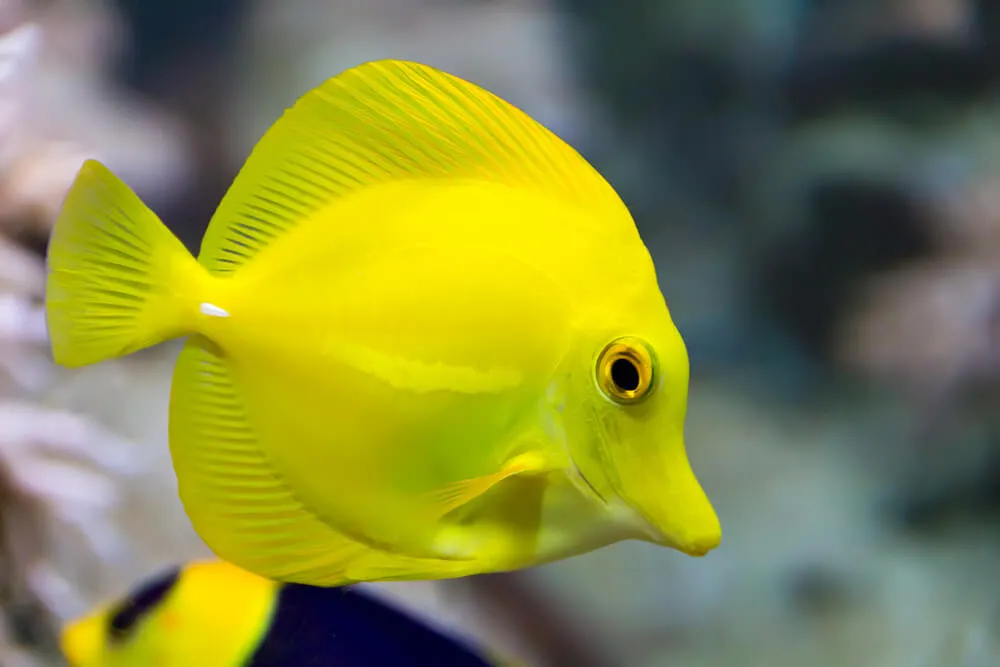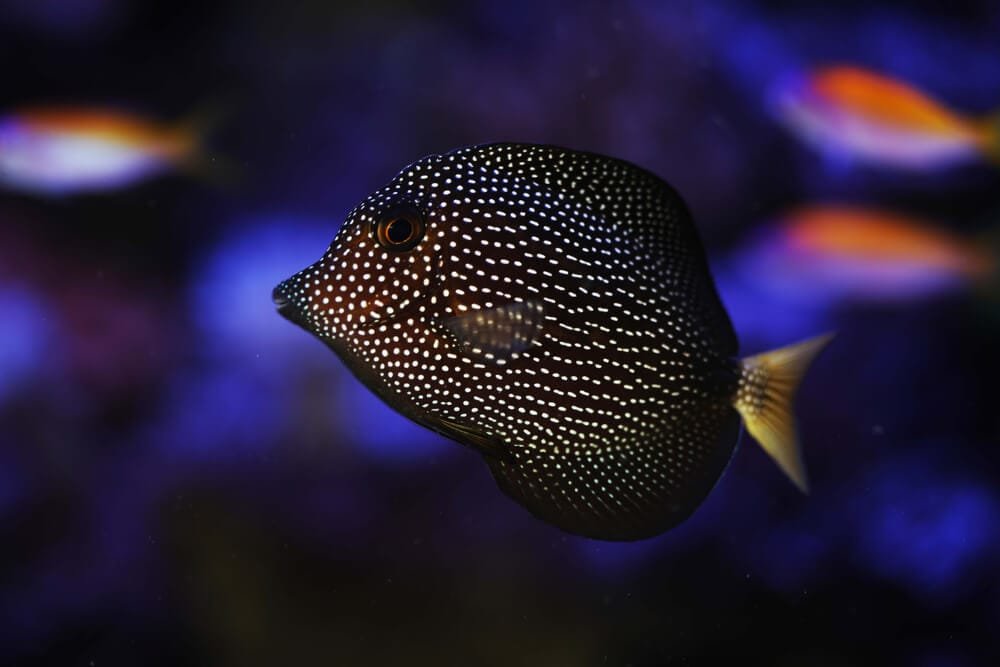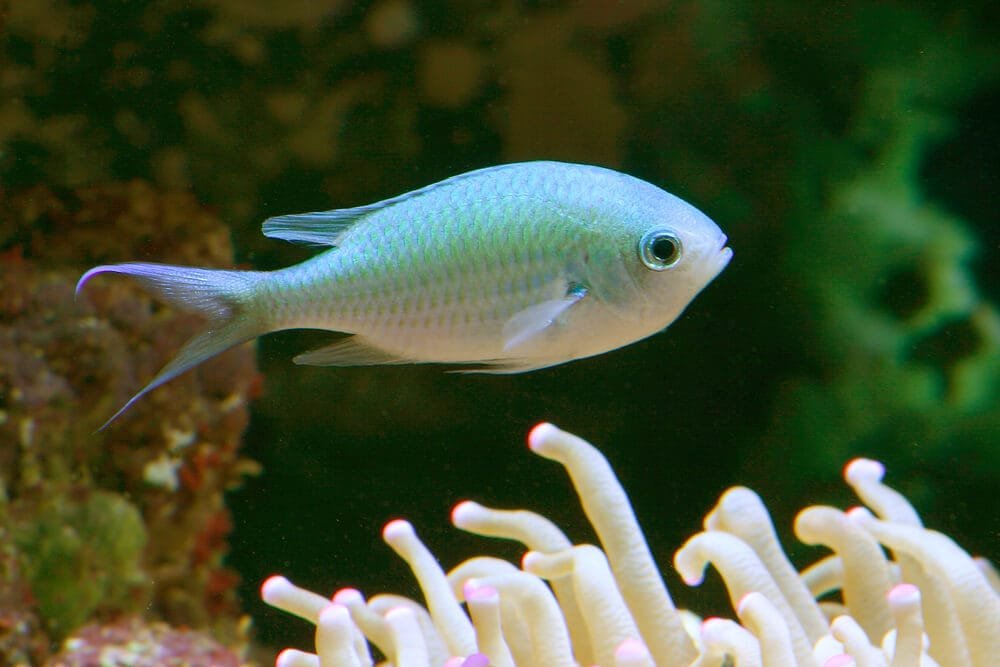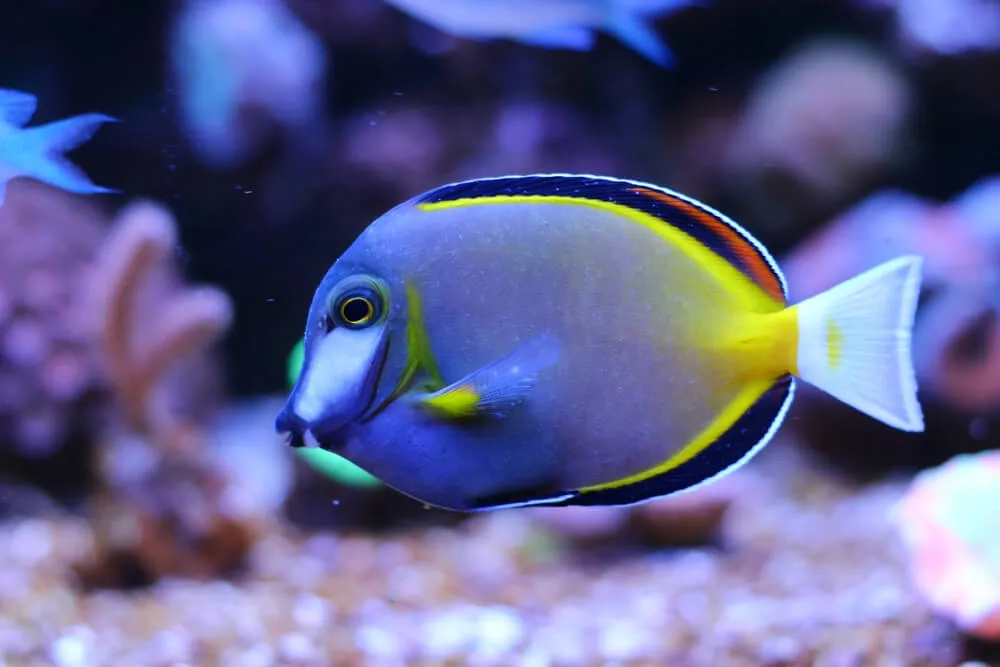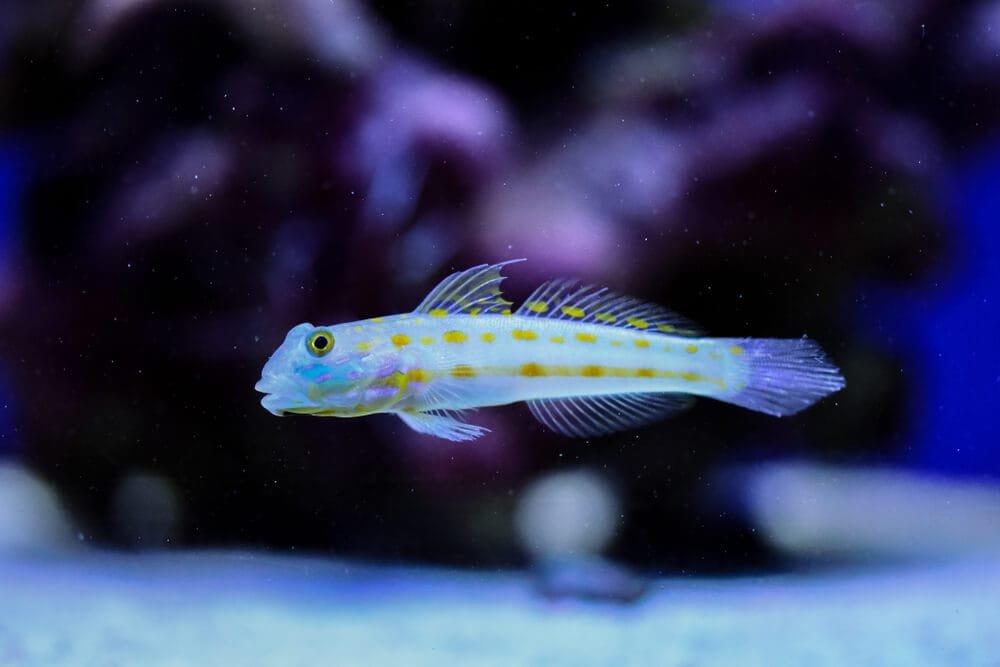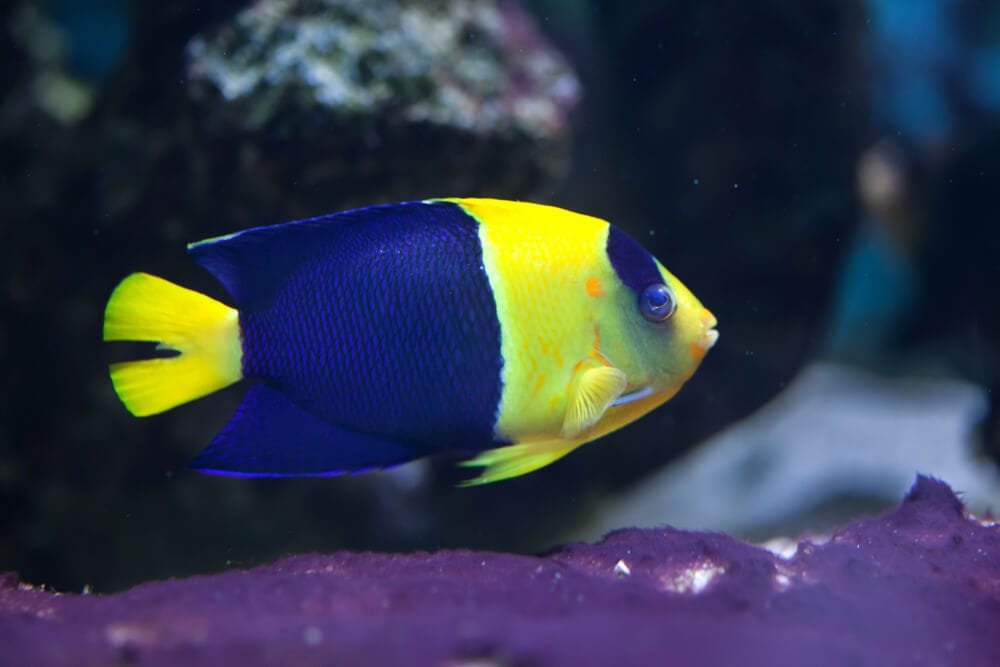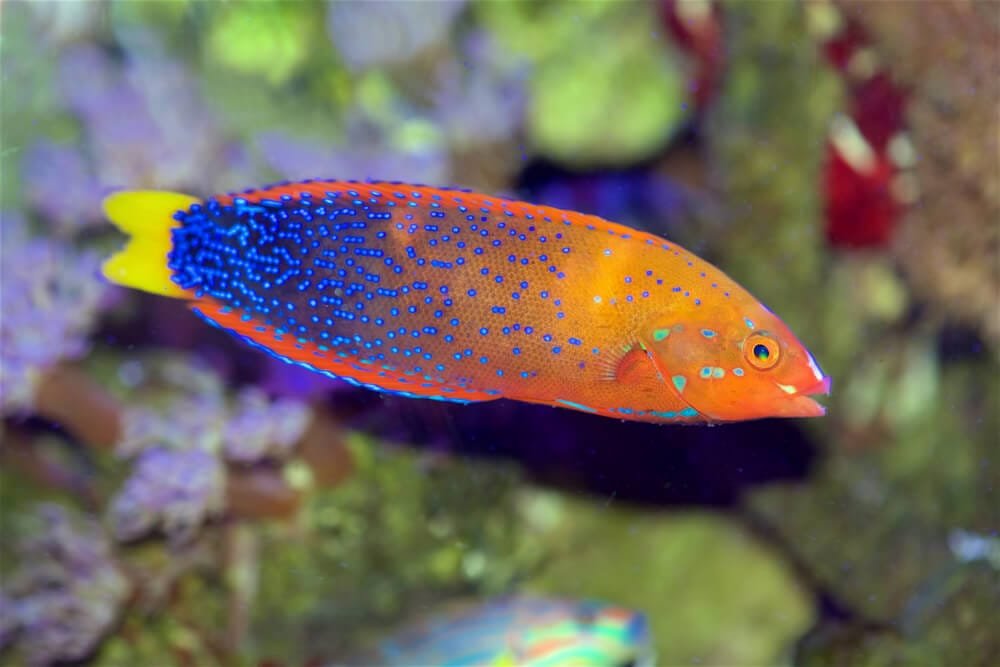Purple Firefish: Tank Requirements and Behavior Insights
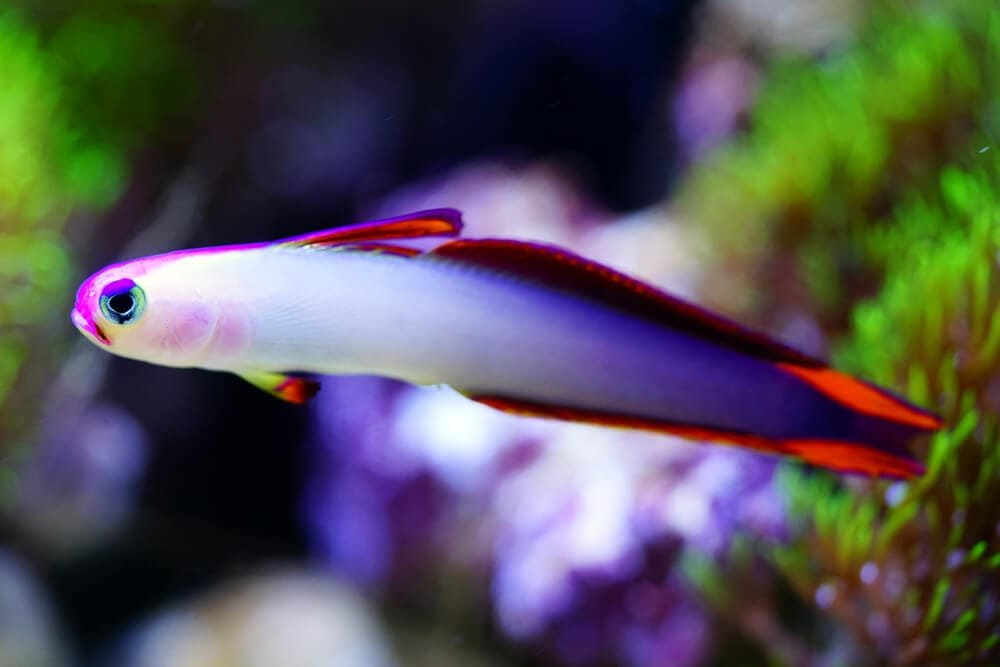
Imagine a breathtaking underwater scene, where vibrant colors blend and marine life thrives. In the midst of this enchanting world, there exists a captivating creature known as the Purple Firefish. With its mesmerizing hues of purple and orange, this exotic fish stands out like a gem among a sea of dullness. Its gracefully elongated body and tranquil demeanor make it a beloved addition to any aquarium. Join us as we explore the captivating world of the Purple Firefish, uncovering its unique characteristics and captivating beauty. Brace yourself for an underwater adventure unlike any other.
Overview
The Purple Firefish is a stunning and eye-catching fish that can bring vibrant colors to any aquarium. With its beautiful purple body, contrasting yellow tail, and elongated body shape, it is truly a sight to behold. This species, also known as the Firefish Goby or the Decorated Firefish, belongs to the genus Nemateleotris and is highly popular among aquarists for its striking appearance.
Appearance
The Purple Firefish is a relatively small fish, typically reaching a size of around 3 inches when fully grown. Its slender body is adorned in shades of deep purple, with a beautiful metallic sheen. The dorsal fin is elongated and reminiscent of flames, hence its name “Firefish”. The tail fin, on the other hand, is a bright yellow, providing a striking contrast to its purple body. These vibrant colors make the Purple Firefish a true showstopper in any aquarium.
Habitat
In the wild, the Purple Firefish is commonly found in the Indo-Pacific region, particularly in the waters surrounding Australia, Indonesia, and the Philippines. Its natural habitat includes coral reefs and rocky crevices, where it seeks shelter and protection. These fish prefer calm and quiet areas with plenty of hiding spots to retreat to, as they are known to be timid and easily startled.
Behavior
The Purple Firefish is known for its peaceful and non-aggressive nature, making it an ideal addition to a reef or community aquarium. It spends much of its time perched on rocks or in crevices, constantly on the lookout for danger. These fish are highly alert and have excellent eyesight, allowing them to quickly dart back into hiding at the slightest sign of threat. However, once acclimated to their surroundings, they can become bolder and venture out more frequently.
Feeding Habits
Diet
Purple Firefish are omnivores and have a diverse diet. They primarily feed on small crustaceans, zooplankton, and tiny aquatic invertebrates that they find in the water column and within the nooks and crannies of the reef. In an aquarium setting, it is important to provide them with a varied diet that includes high-quality pellet foods, frozen or live brine shrimp, mysis shrimp, and other small meaty foods.
Feeding Techniques
Purple Firefish are known to be opportunistic eaters and will eagerly snatch up any food that drifts by in the water column. They are also known to pick food off the substrate or even nibble on the live rock in search of tiny organisms. Due to their small size, it is recommended to feed them small, bite-sized pieces of food that they can easily consume.
Time of Feeding
These fish are most active during the daytime and tend to be more feeding-oriented during those hours. It is recommended to establish a regular feeding routine by offering food at the same time each day. This can help the fish become more comfortable and confident in their feeding behavior.
Reproduction
Mating Behavior
When it comes to mating, Purple Firefish are known to form monogamous pairs. A male and female will establish and defend a territory, often sharing the same crevice or burrow. They engage in courtship displays, which involve the male swimming in an S-shaped pattern while rapidly fanning his dorsal fins. This behavior not only attracts the female but also displays the male’s fitness for mating.
Egg Laying
After successful courtship, the female will lay adhesive eggs in a protected area, such as a crevice or burrow. The number of eggs can vary significantly, ranging from a few dozen to several hundred. Both the male and female take turns guarding the eggs, keeping them safe from potential predators.
Parental Care
Both parents play a crucial role in protecting the eggs until they hatch. They fan the eggs with their fins to ensure proper oxygenation and remove any debris or dead eggs from the clutch. After hatching, the juveniles are left to fend for themselves, and the parents resume their normal behavior.
Lifecycle
Egg Stage
In the egg stage, the fertilized eggs are carefully guarded by the male and female Purple Firefish. The incubation period can vary but generally lasts for around 7 to 10 days, depending on the water temperature and other environmental factors.
Larval Stage
Once the eggs hatch, the larvae enter the ocean’s planktonic stage. During this stage, they are tiny and almost transparent, relying on drifting currents to transport them to suitable habitats. This stage is critical for the survival of the young fish, as many predators see them as easy prey.
Juvenile Stage
After the larval stage, the young Purple Firefish undergo a metamorphosis, changing their shape and coloration as they transition to the juvenile stage. They develop the distinct purple body with a yellow tail that is characteristic of adult Purple Firefish. Juvenile fish tend to stay closer to the reef and seek shelter among the rocks or coral.
Adult Stage
As the fish mature, they reach their adult stage, characterized by their vibrant colors and full-sized body. The Purple Firefish can live for several years in captivity if provided with proper care and a suitable environment.
Predators
Natural Predators
Purple Firefish face a variety of natural predators in their native habitat. Larger predatory fish, such as groupers, snappers, and lionfish, pose a significant threat to these smaller fish. Additionally, some invertebrates, like crustaceans and cephalopods, may also prey upon Purple Firefish.
Human Threats
Human activities, such as overfishing and destructive fishing practices, can have a significant impact on Purple Firefish populations. The aquarium trade is another potential threat, as the demand for these beautiful fish can lead to unsustainable collection practices if not properly regulated.
Conservation Status
Population Trend
The population trend of the Purple Firefish is currently not well-documented, as comprehensive studies on its abundance are limited. However, it is important to note that the destruction of coral reefs, pollution, and overfishing have negative effects on many reef-associated species, including the Purple Firefish.
Human Impact
To ensure the long-term survival of the Purple Firefish, it is crucial to implement sustainable fishing practices and protect their natural habitat. Responsible aquarium practices, such as purchasing from reputable sources and supporting captive-bred specimens, can also help reduce the impact of the aquarium trade on wild populations.
Fascinating Facts
Unique Adaptations
Purple Firefish possess several unique adaptations that allow them to thrive in their environment. Their elongated body shape and vibrant colors provide camouflage among the coral reefs, helping them blend in and avoid predators. Additionally, their ability to quickly dart into hiding spots makes them well-suited to avoid danger.
Symbiotic Relationships
Purple Firefish are known to form symbiotic relationships with various reef organisms. They often share their burrows with other species, such as pistol shrimps, gobies, or cleaner shrimp. These relationships benefit both parties, as the Firefish gains protection and the other species gain a secure home.
Aquarium Care
Tank Setup
When keeping Purple Firefish in an aquarium, it is essential to provide them with a suitable habitat that mimics their natural environment. A tank of at least 20 gallons is recommended to provide ample swimming space. Decorate the tank with live rock, corals, and plenty of hiding places, such as caves or crevices, to mimic their natural habitat.
Water Parameters
Maintaining stable water conditions is crucial for the health and well-being of Purple Firefish. The recommended temperature range is between 72°F and 78°F (22°C and 26°C), with a pH level between 8.1 and 8.4. The specific gravity should be maintained between 1.020 and 1.025, and ammonia and nitrite levels should always be kept at zero.
Feeding in Captivity
In captivity, Purple Firefish will readily accept a varied diet consisting of high-quality pellet foods, frozen or live brine shrimp, mysis shrimp, and other small meaty foods. It is essential to provide them with small, frequent meals throughout the day to ensure they receive proper nutrition.
Compatibility
Suitable Tankmates
Purple Firefish are generally peaceful and can coexist with a wide range of tankmates. Small, non-aggressive fish, such as clowns, gobies, and small wrasses, are great companions for the Purple Firefish. Additionally, they can also be housed with some invertebrates, such as cleaner shrimp, snails, or small hermit crabs.
Aggression towards other Species
While Purple Firefish are generally peaceful, they may exhibit territorial behavior towards similar species or other fish with similar body shapes. It is important to provide ample hiding places and territories within the aquarium to minimize potential conflicts.
Conclusion
If you’re looking to add a splash of vibrant color and graceful movement to your aquarium, the Purple Firefish is an excellent choice. With its stunning purple body, flame-like dorsal fin, and peaceful nature, this fish is sure to captivate both experienced and novice aquarists alike. By providing them with suitable care, a well-maintained environment, and appropriate tankmates, you can enjoy the beauty of these captivating fish for years to come.
